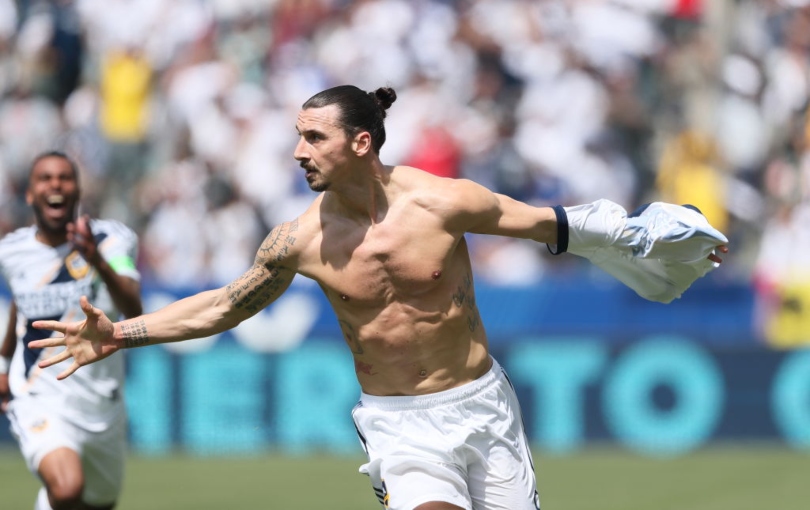
Before Martin Odegaard and Erling Haaland arrived to rip up the Premier League, a host of other Nordic stars had already made their mark on the game, in Britain or further afield.
In no particular order, FourFourTwo highlights the 16 best footballers in both the men's and women's games to have heralded from Norway, Sweden and Denmark - without noticing the burdening impacts of Odegaard or Haaland quite yet.
From Champions League-winning goalscorers to influential figures of international triumphs - and everything in between - these players are iconic figures in Scandinavia.
There even features a God - or at least that's what a certain someone would prefer to be known as. So, without further ado, here are the 16 best footballers from the aforementioned three nations.
Michael and Brian Laudrup (Denmark)

With due respect to the De Boers, Hazards and, er, Nevilles, there has never been a more talented pair of footballing brethren than the Laudrups.
Michael is arguably the greatest Danish player of all time. A limousine of an attacking midfielder, he picked up silverware at Ajax, Barcelona, Real Madrid and Juventus. He was an integral cog in Johan Cruyff’s now-mythical Barcelona ‘Dream Team’, pocketing four La Ligas on the bounce and the 1992 European Cup; he then crossed the vicious divide to the Bernabeu but somehow remains a legend at both clubs.
Best of all, he did it in style. It’s hard to recall a more elegant playmaker: fiercely intelligent, full of feints and blind passes, an assist machine. Italian defender Roberto Galia noted: “I’ve played against Maradona, Platini and Baggio, but the player I saw do the most indescribable things was Michael.”
All of which would be intimidating for a younger brother under normal circumstances, but this was a family made of stern stuff. Brian, four years junior, coasted out of his sibling’s shadow – and Michael stated on a number of occasions that he believed Brian to be the better player. While most pundits would still pick Mike first in the playground, it doesn’t really matter: they were both world class and worshipped. Brian had abundant technical ability, intelligence, pace, and a similar insatiable appetite for assists. He won the Danish player of the year award four times (more than Michael), and starred at Bayern Munich, Fiorentina and Rangers. Danish dynamite indeed.
The biggest treat was watching the pair, who never played together at club level, join forces for Denmark. Michael’s one career mis-step was opting to go on holiday rather than attend Euro 1992 (he didn’t like the manager, and had to watch his kid brother come home with the silverware), but the duo did collaborate to win the 1995 Confederations Cup, turning on the style with Bri up front and Mike in midfield.
The weirdest moment out of the pair came in Michael’s rollercoaster stint as gaffer of Swansea City, who he led to the top half of the Premier League and League Cup glory, before being sacked for a supposedly “laissez faire” attitude to their subsequent poor run.
John Arne Riise (Norway)
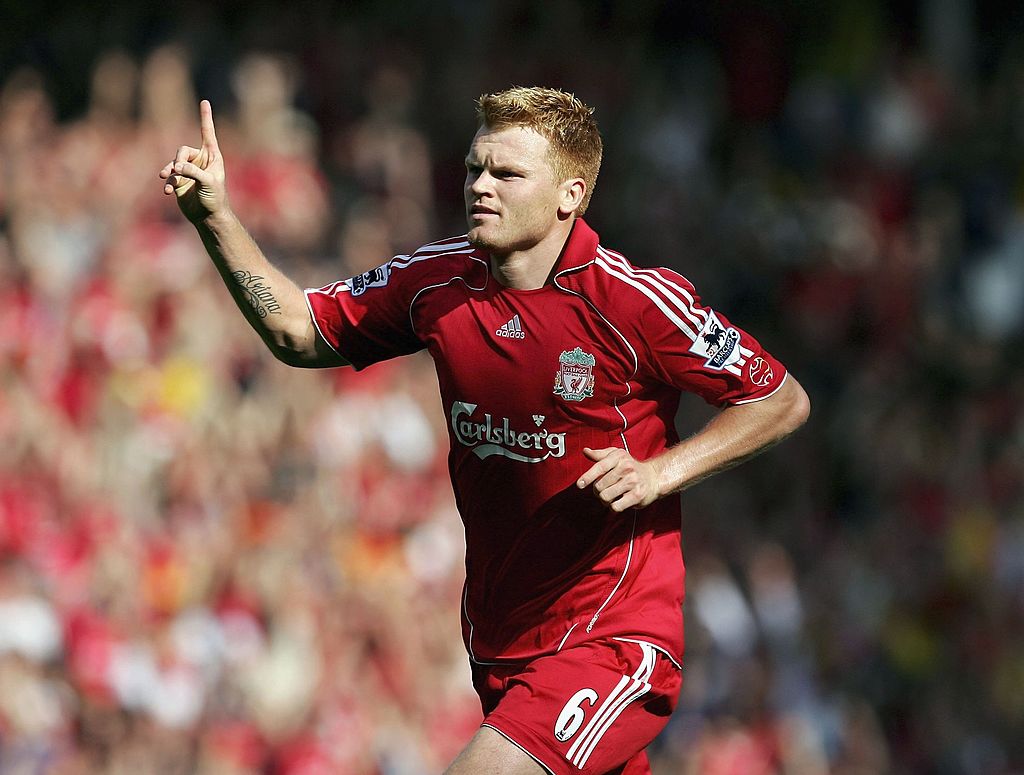
The left-back won a record 110 caps for Norway and became a Liverpool hero during seven seasons at Anfield, after joining from Monaco in 2001. Part of the team that pulled off the fabled Miracle of Istanbul against Milan in 2005 (even though he actually missed a penalty in the shoot-out), he was the king of the thunderbastard, famously beating Fabien Barthez with one hypersonic strike against Manchester United. In another game against Liverpool’s rivals, his shot was so powerful that it sadly dislocated Alan Smith’s ankle.
He also scored the fastest goal in League Cup final history, after 45 seconds against Chelsea in Cardiff. Being on the receiving end of a golf club swung by Craig Bellamy, during a late-night incident in the Algarve, is certainly a fascinating story, too. Fore!
Hanna Ljungberg (Sweden)
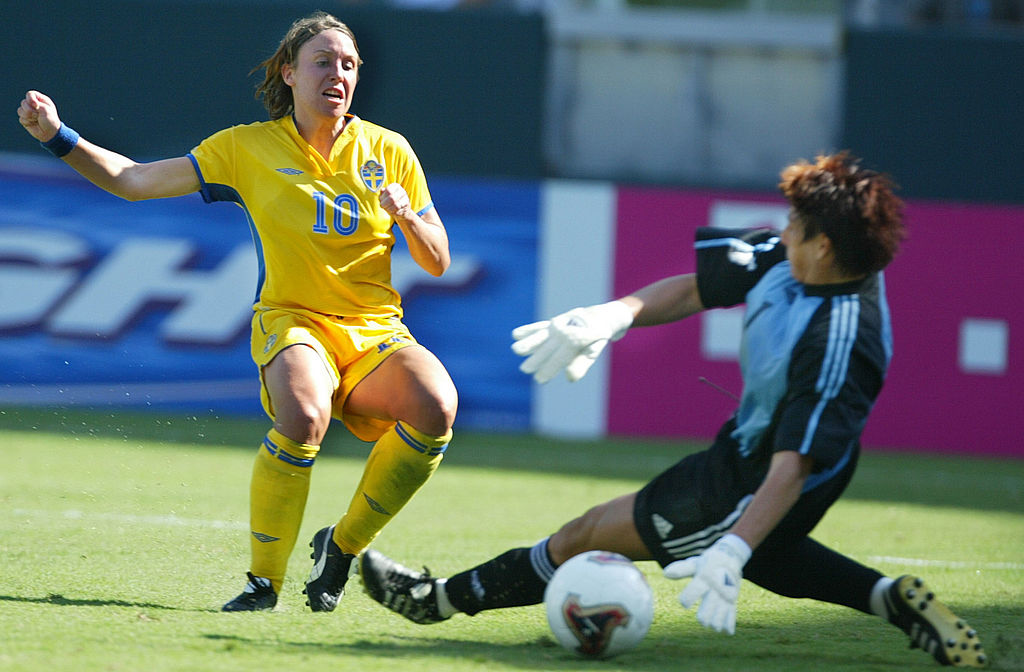
Quick show of hands: who’s heard of the Swedish city of Umea? If you have, it’s probably because of Hanna Ljungberg, the speedy spearhead of Umea IK, a women’s football powerhouse in the 2000s: claiming more cups than IKEA’s bewildering downstairs homeware bit.
No relation to Freddie, Ljungberg helped them become European champions twice - she almost won the 2003 World Cup too, racing through for the opener in the final, before favourites Germany hit back. ‘Skam!’, as they say in Umea (that means ‘Shame’, we’re not accusing anyone of match-fixing, don’t sue us).
Strangely, Perugia tried to sign Ljungberg in 2003 - for their men’s team. The Serie A upstarts certainly thought outside the box: they also signed Colonel Gaddafi’s son. Did their odd tactics work? Er, no, a deal for Ljungberg fell through, they got relegated, and haven’t been back in the top flight since.
Ada Hegerberg (Norway)
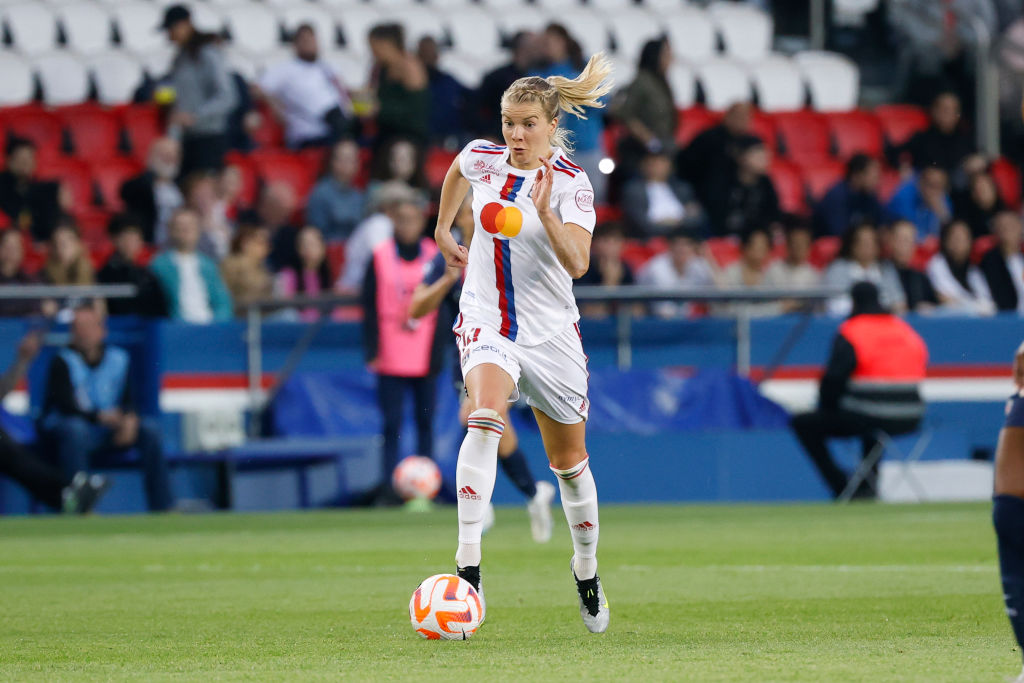
The 2020s have been frustratingly stop-start for the Norwegian super-striker, so far. Just back from a six-month injury after two years out with cruciate complications - plus a famous five-year absence from the Norway national team - it’s almost as if she’s actively trying to let mere mortals catch up. Lyon’s taliswoman is like that too-good kid who has to be moved up an age group to keep things competitive: it’s just not fair otherwise.
Actually, Hegerberg did exactly that as a teenager, except she moved straight into first-team football. Already a fixture for first club Kolbotn at 15, she scored her first hat-trick at 16 and finished that season top scorer. In 2012 she even scored five in a first half, against Fart. Blew them away.
The prodigious striker - and older sister Andrine, a midfielder - then moved to Germany’s terrifically-named Turbine Potsdam. But Ada really took off in France, scoring 15 in the 2017-18 Champions League (still a record) during Lyon’s treble season, and winning the first ever Women’s Ballon d’Or. Although that handover was horrendously off-key - see below.
Hegerberg had already made a dramatic stand against footballing inequality months earlier, refusing to play for Norway until the culture changed; so she hasn’t always been universally loved, back home. That self-imposed exile ended last year, with a hat-trick against Kosovo.
Injuries are a concern but at 27, Hegerberg is already the Women’s Champions League’s all-time top scorer, with 59 goals - and that’s despite hardly playing for three years. Is the hundred plausible? Whatever happens next, she’s got to be in the GOAT race.
How long have you got for her career highlights? A 16-minute hat-trick in the 2019 Women’s Champions League Final takes some topping. Perhaps even sweeter though was her goal in last year’s final, also against Barcelona, after two years out. She’s a goalscoring machine who rarely seems rusty.
The worst booking of Hegerberg's career? Whoever hired DJ Martin Solveig to co-host the Ballon d’Or ceremony, in 2018. The Lyon phenom won the inaugural women's award, then Solveig asked if she twerks, which went down about as well as a Europop banger at a funeral. Would he ask Luka Modric to pole dance? Probably not.
Peter Schmeichel (Denmark)
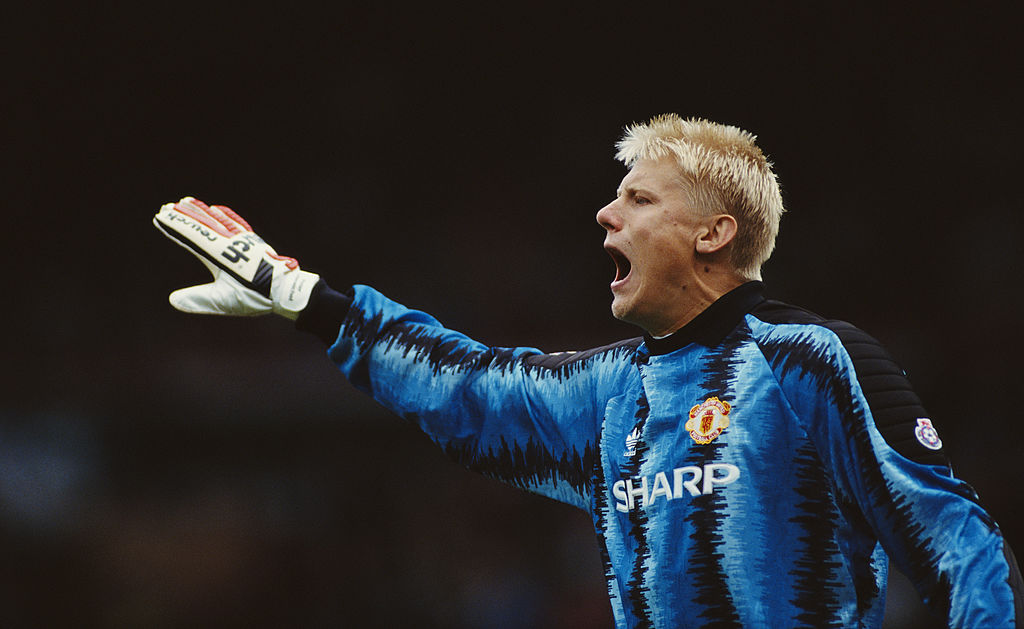
Imagine trying to defend in front of Peter Schmeichel - no matter how grand your career, you’d still feel like one of those shaky greasy-spoon chefs struggling to make an egg for Gordon Ramsay.
The tough love worked though: purple-faced Pete is definitely the top Nordic number one and a decent shout for greatest keeper ever, given Denmark’s miraculous success at Euro 92, plus umpteen domestic honours and the 1999 Champions League. You just don’t get that sort of simmering fury from modern keepers. Jordan Pickford? Not quite the same, somehow.
The Great Dane was such a reliable decision-maker, until he left Manchester United. For some, Schmeichel’s single season at Manchester City partly tarnished eight glorious years at Old Trafford, but more troubling was his promo work for Russia 2018 and Qatar 2022. Sometimes keepers just shouldn’t venture out.
Tomas Brolin (Sweden)
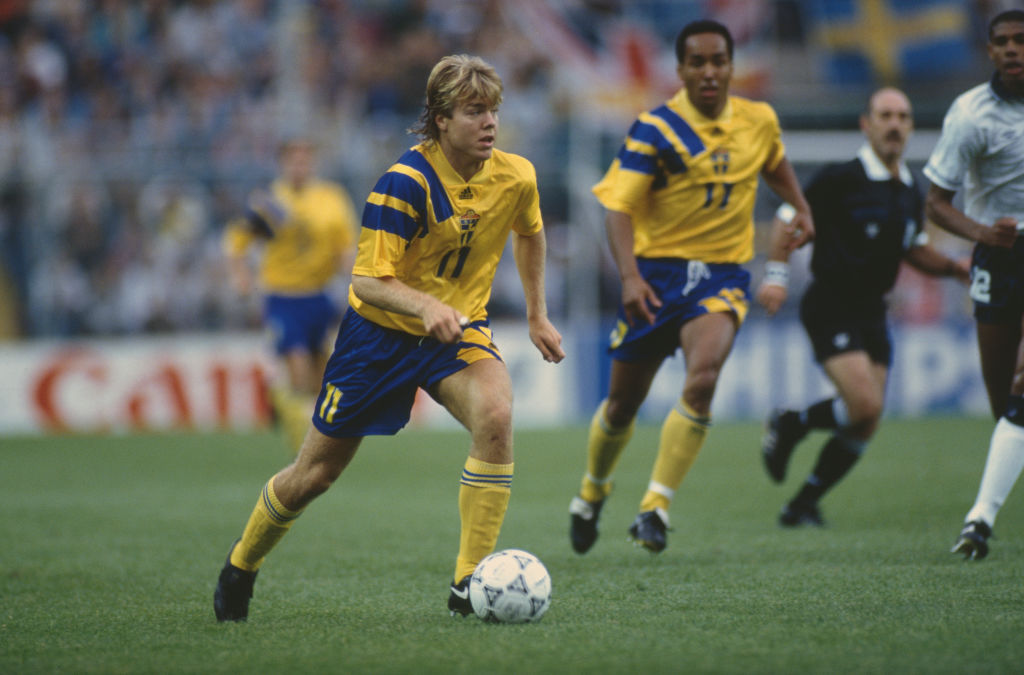
If there was ever a meeting of manager and player destined for doom, it was when maverick Swedish genius Brolin signed for no-nonsense Leeds taskmaster Howard Wilkinson. Brolin was a wildly talented playmaker, wonderful at Parma in his early twenties, and sensational for his country. But his move to Elland Road derailed him. Sergeant Wilko thought he was lazy and played him out of position: the grumpy Swede decided to self-sabotage. “Run up and down like an idiot? That wasn’t me. So I decided I was going to be piss-poor.” He ended up battling weight issues and retiring at 29.
Brolin won 47 Sweden caps, scoring 26 goals, and his displays at Euro 92 in his homeland were mesmeric. He smashed a top-corner cracker past Chris Woods to eliminate England and prompt the Graham Taylor-baiting headline “Swedes 2, Turnips 1”, as his side pillaged into the final four.
Zlatan Ibrahimovic (Sweden)
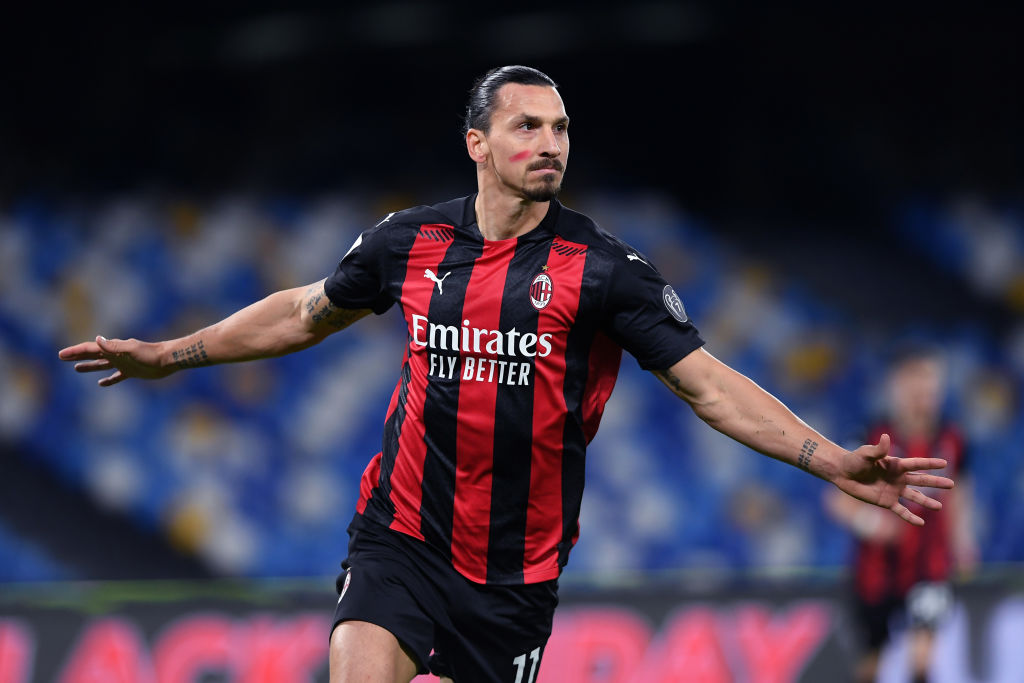
Where to start with a man who is already a legend, who like Elvis or Kanye is famous enough to only need one name (trademarked, other Zlatans!), who has statues erected before he’s even retired, who knows five languages and black-belt taekwondo, who has his own range of computer games and cosmetics, and who is surely the greatest Swede of all time? Back in your box, Bjorn Borg botherers.
With the football, we guess: Zlatan’s production since his debut for Malmo in 1999 has been relentless. He’s played more than 850 games, scored more than 500 goals for Ajax, Juve, Inter, Barca, Milan, United, PSG and LA Galaxy, and become his country’s all-time top hitman. Furiously driven (“I need to be angry to play well”), his physical assets are overt – 6ft 5in tall, quick, agile, a fighter’s physique – but have been twinned with a sublime tactical brain, technical excellence, versatility, an appetite for hard work and street cunning to produce a near-perfect footballer.
Equally as important to his iconic status, though, have been the looks, swagger and wit. Not since Eric Cantona has there been an enigmatic glare to match Zlatan’s, nor such a fierce insouciance towards reputations (to Pep Guardiola: “you haven’t got any balls”). There’s even a likeability about his third person-referencing (telling Arsene Wenger “Zlatan doesn’t do auditions”; signing off at Galaxy with “you wanted Zlatan, I gave you Zlatan… now go back to watching baseball”).
Perhaps being funny saves him from the kind of opprobrium that fellow self-worshipping powerhouse CR7 receives. Saying things like “I can’t help but laugh at how perfect I am” is Muhammad Ali territory – but Zlatan is one of the few who can match such talk with the walk, too.
When it comes to career highlights, take your pick. That goal against England? Becoming Sweden’s top scorer? Everyone will have their own peak Zlatan moment – but his 2014-15 season for PSG, 50 goals in 51 games, even taking into account the quality of some of the opposition, is frankly insane.
However, the launch of his aftershave, Zlatan Pour Homme, which contains “notes of electric pepper and driftwood”, and has his tattoo on the bottle, was certainly strange. It was dismissed as “very 1990s, like watermelon, disappointing, a sheep in wolf’s clothing,” by FourFourTwo’s perfume reviewer in 2015.
Pernille Harder (Denmark)
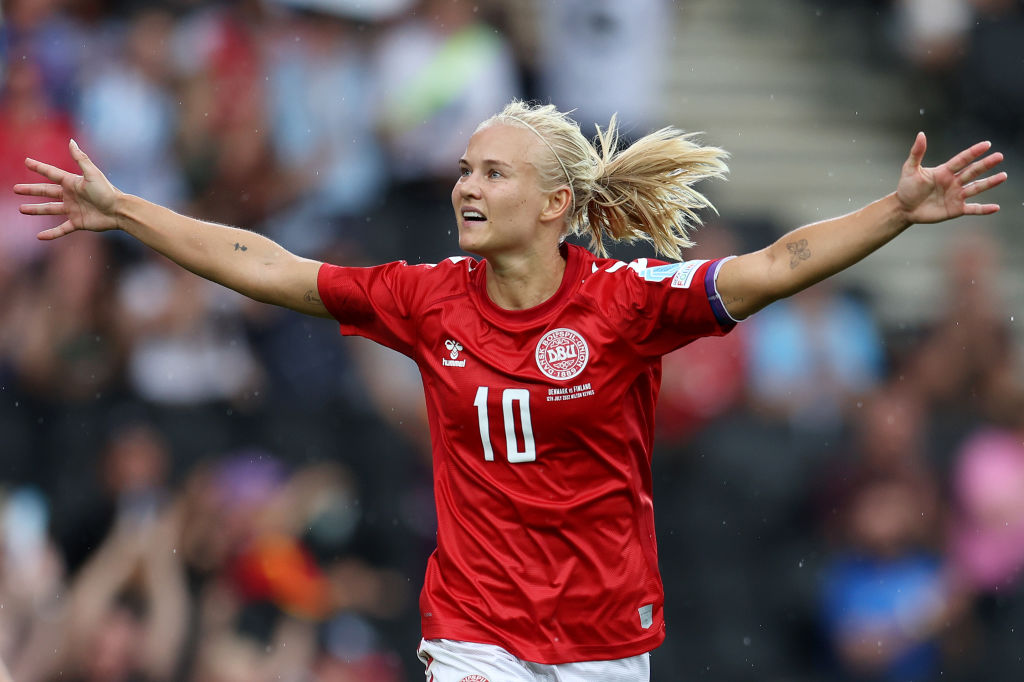
The most expensive player in women’s football, before Keira Walsh’s move to Barcelona in September. Chelsea signed the Dane from Wolfsburg for £250,000 three years ago - Harder has since won the WSL twice, plus FFT’s global poll to determine who would have claimed the 2020 Women’s Ballon d’Or, had it not been cancelled because of COVID.
With 70 international goals to her name, the 30-year-old attacking midfielder is Denmark’s all-time leading scorer, and has YouTube to thank for inspiration when she was younger. “It was difficult to find any women’s football on TV, so I watched clips of Marta,” she revealed. Only Alexia Putellas can match her two UEFA Player of the Year awards.
She also captained Denmark to qualification for the 2023 World Cup – their first trip to the tournament since 2007.
Thorbjorn Svenssen (Norway)
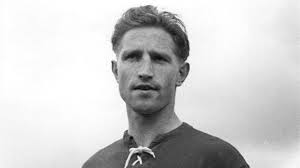
In 1961, the central defender became just the second player in history to reach 100 international caps, after England’s Billy Wright, who’d achieved the feat two years earlier. Nicknamed ‘Klippen’ (The Rock), Svenssen spent his entire career at Sandefjord, between 1945 and 1964, and was hugely admired. “In the 1950s, he was seen as one of Europe’s best centre-halves,” said Per Ravn Omdal, former president of the Norwegian FA.
Having also represented Norway at the 1952 Olympics, he finished with 104 caps, one short of Wright, playing his last game aged 38. Only three players, Ronny Johnsen among them, have appeared for Norway at a more advanced age.
After first captaining Norway aged 24, Svenssen ended up skippering his country an incredible 93 times.
Ole Gunnar Solskjaer (Norway)
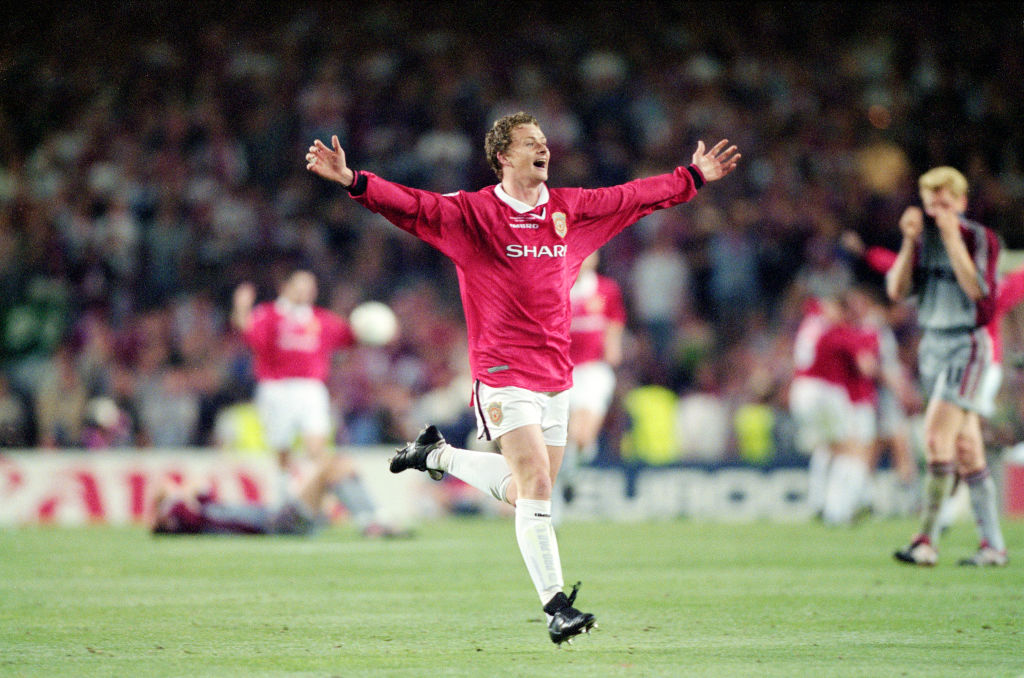
“SOLSKJAER!” It’s one of those surnames you can only ever hear in one particular accent - that of climaxing Clive Tyldesley - even after a 17-year playing career, then another decade in management. That’s the thing about injury-time winners in Champions League finals: people tend to forget about everything else. Nice problem to have, though.
The elfin Norwegian did some good stuff back home first - helping Clausenengen and Molde to new heights - then got 126 goals for Manchester United, top-scoring with 18 in his first season. Other highlights: crucial strikes against Liverpool, Villa and Leeds, four versus Forest and Everton, and a fantastically cynical match-saving professional foul to thwart Newcastle, taking a red card for the team. The baby-faced assassin didn’t just score goals.
Still, he usually played second fiddle to the first-choicers - Eric Cantona, Dwight Yorke, Andy/Andrew Cole, Ruud van Nistelrooy - and seemed perennially set for moves to, say, Spurs. United accepted offers, he chose to stay. Which makes sense: just count the medals. He was key for Norway though, forming a classic little-and-large double act with Tore Andre Flo; a sort of Stan and Ole.
Solskjaer was a Premier League pioneer, in a way. At Manchester United, he kicked off like your classic start-hungry supersub, but settled into life leading the new breed of rotation-happy squad bodies; an original Origi, or proto-Chicharito. Modern teams may collect players like Panini stickers but they really want feelgood pros like him, warming the bench emotionally too.
He has a plethora of career highlights, too - winning that big final is definitely up there, but for sheer Solskjaerian magic, it’s Nottingham Forest’s City Ground, earlier in 1999. United were already 4-1 up when Ole entered, stage left. “Just keep the ball,” said coach Jim Ryan; he scored four in 14 minutes. That new Norwegian sensation might have tapped in five against RB Leipzig recently, but he had a whole hour, the absolute lightweight.
Things only really went awry when Ole became manager. It started awkwardly - stuck in a hotel because he’d rented his Cheshire house to, er, Virgil van Dijk, and the strain eventually told. During one poor run in 2021, he reckoned the players were confused by the red banners around Old Trafford. Back to Clive: “And Solskjaer has lost it…”
Pia Sundhage (Sweden)
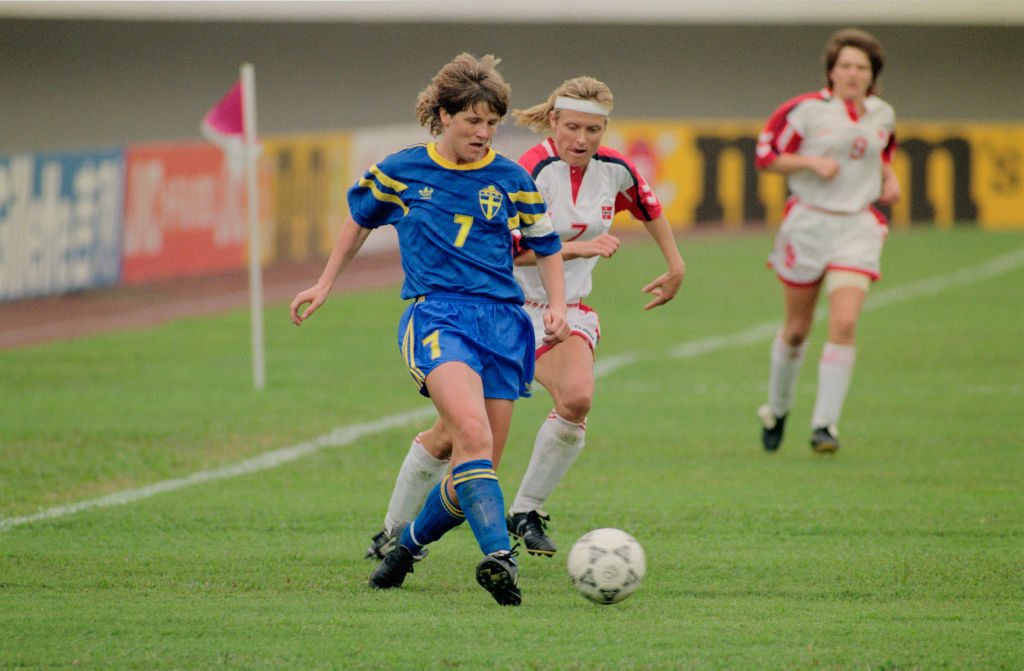
The Swede is a Yoda-like figure in women’s football, after amassing a then-record 146 caps for her country between 1975 and 1996. Sundhage made her national team debut as a 15-year-old prodigy back in 1975, going on to net a joint-record 71 goals, and even appeared on a Swedish postage stamp, such was her fame.
The former forward has since had success as a manager - guiding the USA to Olympic gold in 2008 and 2012, delivering silver for Sweden in 2016, then winning the Copa America Femenina with Brazil last summer.
Sundhage was both best player and leading scorer at Euro 84, netting in both legs of the semi final against Italy. After scoring once more against England in Gothenburg, she bagged the winning spot kick in the second leg, in a penalty shootout at Kenilworth Road.
Allan Simonsen (Denmark)
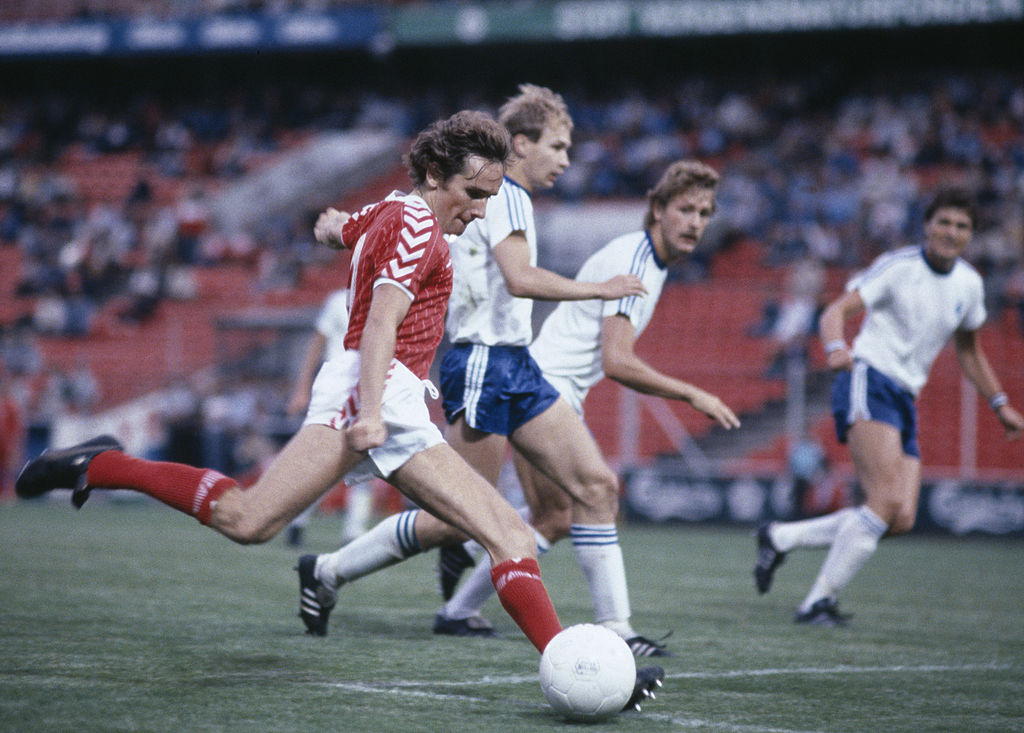
Did you know that Maradona caused Charlton Athletic’s 80s downfall? Kind of. When Diego joined Barcelona in 1982, it squeezed out Allan Simonsen, who - hankering for smaller surroundings - went to Charlton. One problem: the Addicks shelled out £300,000, but were in the second tier and couldn’t really afford him. Cue years of financial strife, and a move away from The Valley.
What a signing, though. The prolific Dane had thrust Borussia Moenchengladbach to three league titles, two UEFA Cups and the 1977 European Cup Final: Liverpool won but Simonsen scored a corker and beat Kevin Keegan to the Ballon d’Or.
Trailing to Terry McDermott’s opener, Simonsen seized on a loose pass, reached the corner of Liverpool’s area, considered his options and decided to just smash it past Ray Clemence. Might as well.
Henrik Larsson (Sweden)
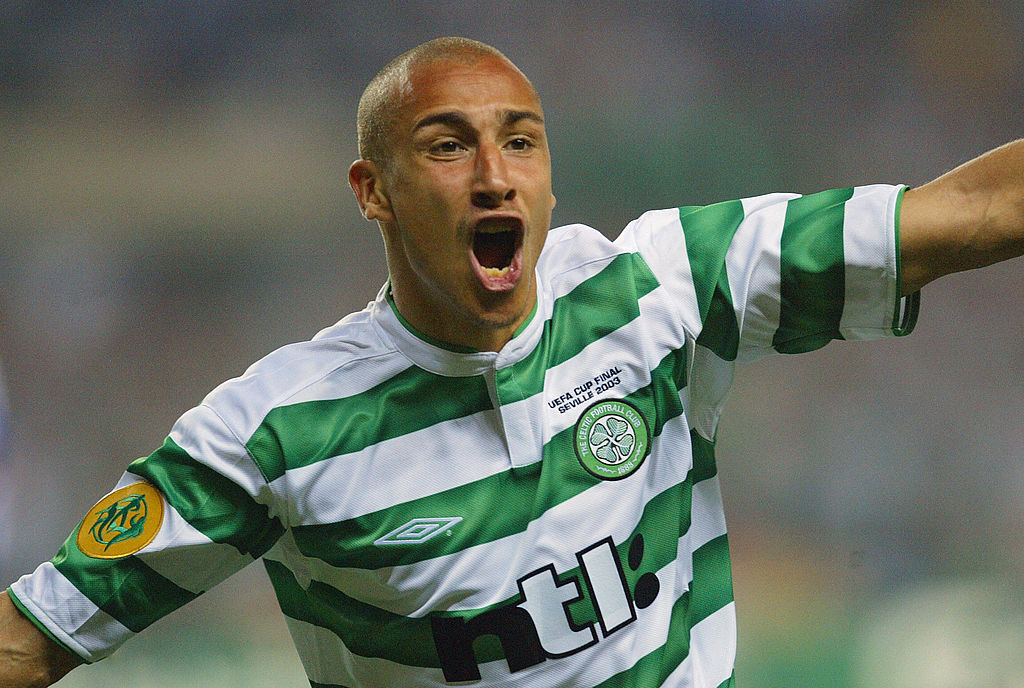
For Celtic fans, Larsson is still the ‘king of kings’. For opposition defenders, he was a ghost. “Larsson would disappear,” recalled bewildered Motherwell stopper Stephen Craigan of trying to tackle him. “You’d swear sometimes that he’d vanished into thin air. He was invisible.”
The Swede was a complete forward: fast, tough, with great touch, brilliant in the air, explosive, and a lethal finisher. But most of all, he was evasive, with an uncoachable instinct for finding space and slipping his man.
Some might argue seven seasons in Scottish domestic football, bamboozling the backs of Motherwell and beyond, was too long for a player of his international pedigree. But the Hoops were flying in Europe, and Larsson loved Glasgow. His family were settled and “we had something good going on with Martin O’Neill. I was really happy at Celtic, I knew I was important there. There was no reason to go.”
Half of Glasgow loved him back. Larsson helped foil Rangers’ bid for the evasive 10 in a row, and the goals never stopped: he would end up with 242 goals in 313 games. He got his shot at the big time after an amicable separation from Celtic, with two seasons at Barcelona. The first was curtailed by an ACL injury, but the second was magical – especially in the Champions League final against Arsenal, where he broke North London hearts by assisting both goals. A spell with Manchester United, some fine play internationally and a middling management career followed – but nothing would truly top his time in Scotland.
In the 2006 Champions League final, Larsson was the impact sub to end all impact subs. “People always talk about Ronaldinho, Eto’o and everything, but I didn’t see them today, I saw Henrik Larsson,” said Thierry Henry afterwards. “He came on, he changed the game. That is what killed the game.”
His weirdest moment? It’s probably not weird to floorball fans (is there a floorball magazine called FloorFloorTwo?), but Larsson was highly competitive in the hockey-style game as a kid, and after retiring from football, took up the sport again at a good level for his hometown club, Helsingborg.
Hege Riise (Norway)
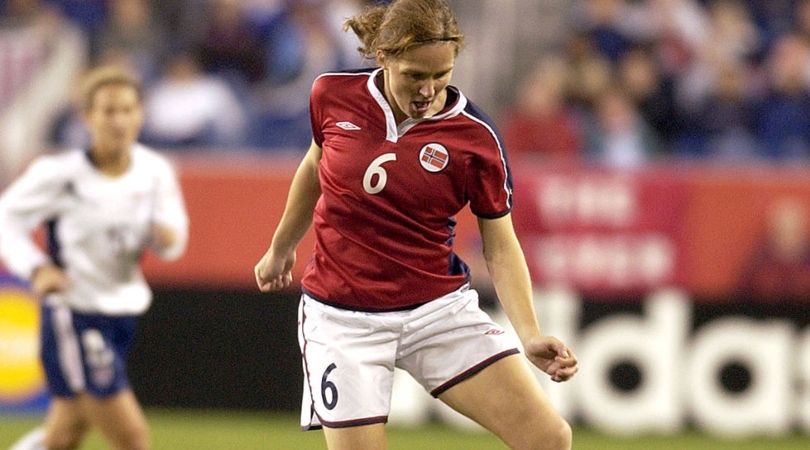
Norway’s current women’s coach is an iconic figure in her homeland – and one of the greatest female footballers in history. Riise won the Euros in 1993, the World Cup in 1995 and then Olympic gold in 2000 - a hat-trick of titles achieved by just two other women.
A set-piece queen, Riise was invited by Even Pellerud, her 1995 World Cup winning coach, to train with Norwegian top flight club Lillestrom when he moved back into men’s football. “It was to show the players how to take good free kicks,” Per-Mathias Hogmo recently explained.
After a spell as USA assistant coach, Riise became England’s interim boss when Phil Neville departed in 2021, taking charge for the Olympics in Tokyo.
At the 1995 World Cup, Riise scored five goals to win the Golden Ball as the tournament’s best player.
Thomas Gravesen (Denmark)
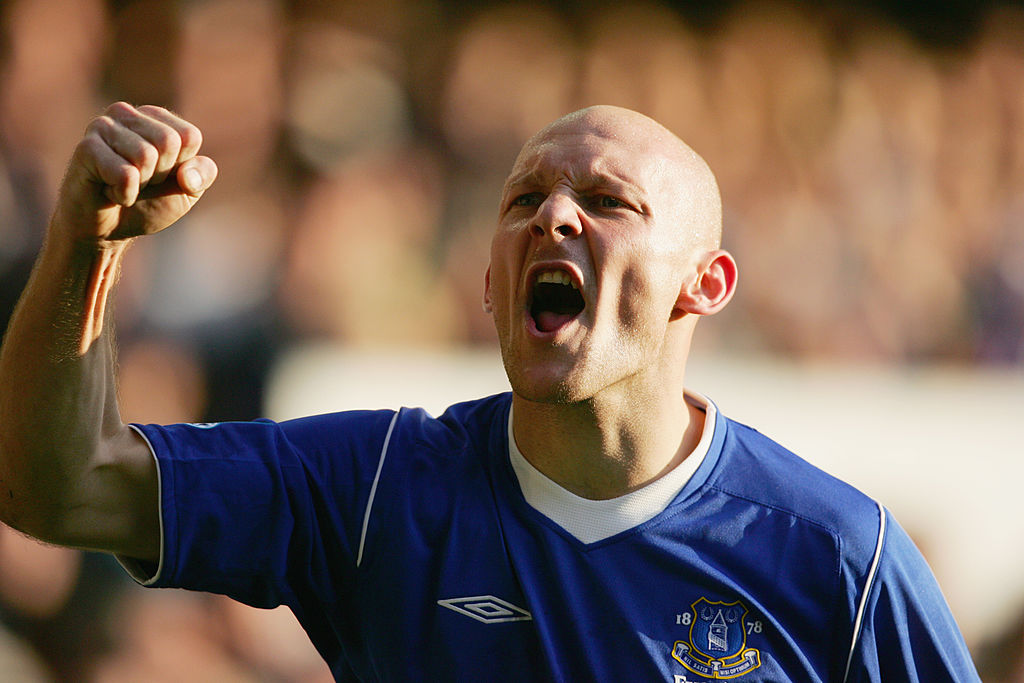
He’s mainly remembered as a demented Danish wrecking ball – the midfield “Mad Dog” who once knocked out Brazilian Ronaldo’s teeth, even though they were on the same team – but Gravesen could also play a bit. He earned a move to Real Madrid (Fabio Capello said “he’s just a bit peculiar… I don’t mess with him”), and bagged 66 international caps. On these shores, though, he’ll always be a Goodison Park ledge, where as the alpha pup for David Moyes’ ‘Dogs of War’, the Toffees became notoriously robust opponents.
Gravesen was once caught on camera inexplicably dangling his genitals over the head of Claus Jensen at Denmark training, or nearly hitting Everton’s physio with a firework he let off during his days on Merseyside. He told FFT he wasn’t actually aiming at the physio, but still…







